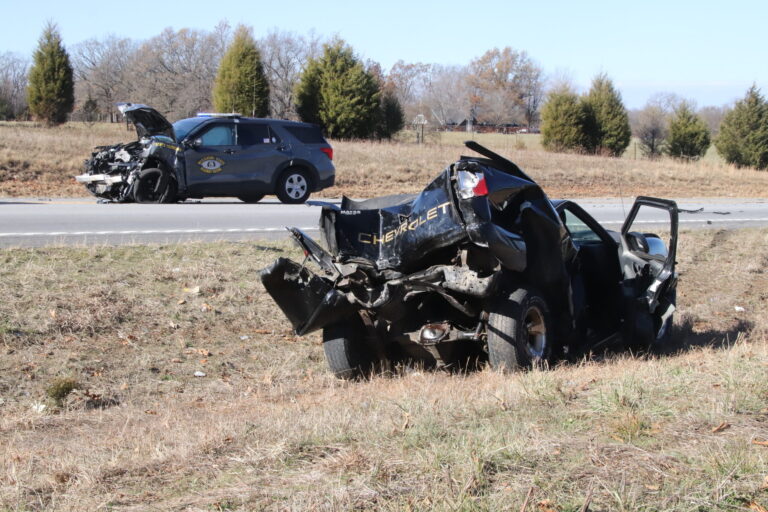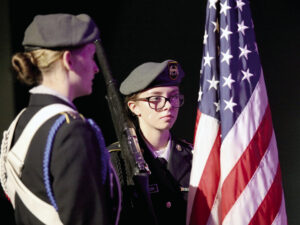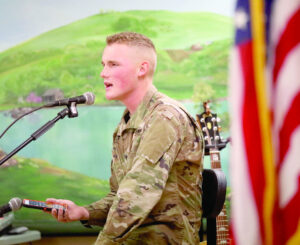Patrol car responding to incident rear ends pickup
By Kyle Troutman ktroutman@cherryroad.com
An Eagle Rock man was injured in a wreck on Thursday at 11:02 a.m. on Highway 37 in Cassville near Tudor Street.
According to a Missouri State Highway Patrol report, Bryson Wilderbuer, 21, of Eagle Rock, was driving a 2000 Chevrolet S10 southbound and was attempting to make a left turn. Trooper Tristan Royster, 27, of Springfield was driving a 2021 Ford Explorer patrol car and responding to a vehicle crash with emergency equipment activated.
The patrol vehicle attempted to pass the pickup on the right, but the pickup swerved toward the right into the path of the patrol car, causing it to strike the pickup in the rear.
Wilderbruer was seriously injured and was flown to Mercy Hospital in Springfield. Royster was not injured.
Royster was wearing a safety device, and Wilderbruer was not. Both vehicles were totaled.
Trooper Samuel Carpenter, public information and education officer for the Patrol, said the crash investigation is ongoing, so he could not say the speed of the patrol vehicle at the time of the incident, nor if any tickets are being issued.
According to the Patrol’s General Orders and policy 62-03 titled “Emergency Vehicle Equipment and Operation,” law enforcement are asked to balance the seriousness of the call with the need or safety, but there is no set maximum speed limit listed.
“Enforcement personnel responding to calls for service must balance the seriousness of the situation with the need for safety and the exemptions from traffic laws stated in Section 304.022, RSMo,” the policy states. “The safety of enforcement personnel, and that of the general public, is of paramount importance. The following circumstances should be carefully considered when responding to a call:
1. The type and seriousness of the emergency
2. Specific instructions concerning the emergency
3. The likelihood that the situation will worsen if the arrival of the officer is delayed
4. The type of area and highway
5. Visibility, weather, road conditions, and the time of the day or night
6. The officer’s familiarity with the area
7. Vehicular and pedestrian traffic conditions
8. Physical limitations of enforcement personnel and knowledge of the area
9. Limitations and condition of the patrol vehicle and its emergency equipment
10. Other circumstances or conditions that mitigate or aggravate the hazards of an emergency response.”
Section 304.022 states once an emergency vehicle is within 500 feet and sounding a siren or flashing red or blue lights, the driver of every other vehicle shall yield the right-of-way and shall immediately drive to a position parallel to, and as far as possible to the right of, the traveled portion of the highway and thereupon stop and remain in such position until such emergency vehicle has passed, except when otherwise directed by a police or traffic officer.”
Another portion of the same section states when running siren and lights, law enforcement may “Exceed the prima facie speed limit so long as the driver does not endanger life or property.”






